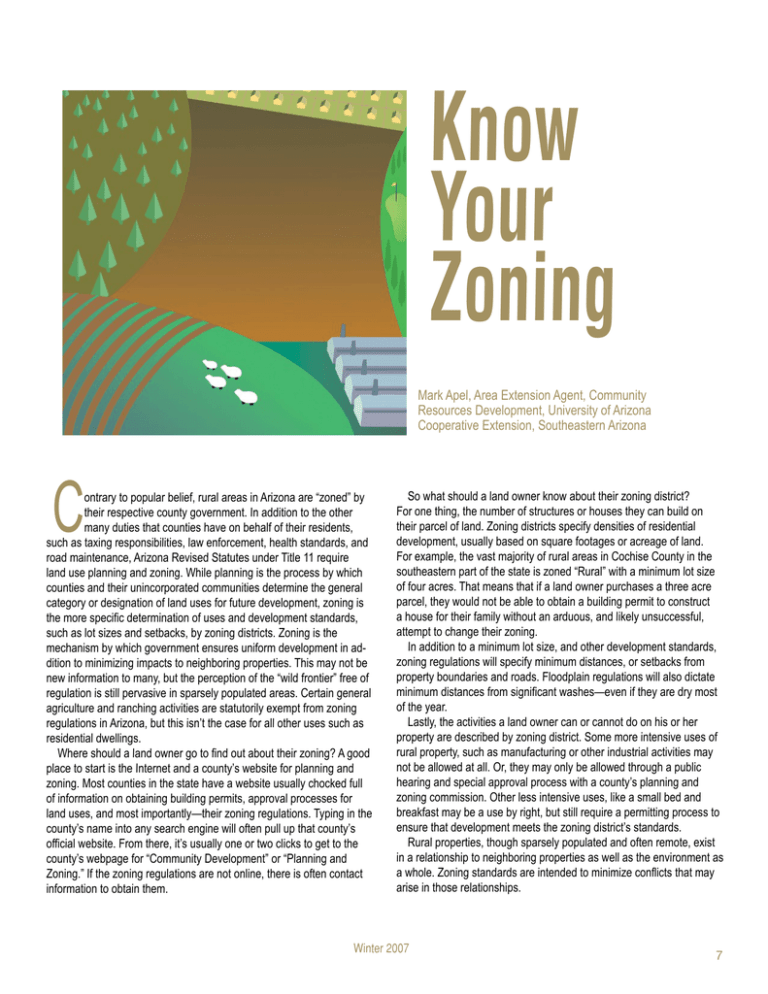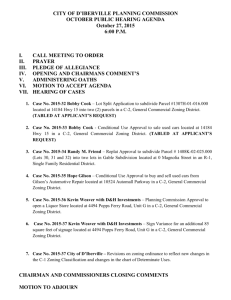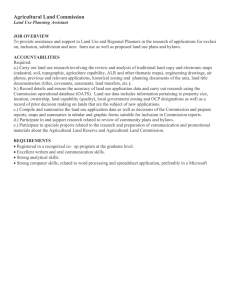Know Your Zoning
advertisement

Know Your Zoning Mark Apel, Area Extension Agent, Community Resources Development, University of Arizona Cooperative Extension, Southeastern Arizona C ontrary to popular belief, rural areas in Arizona are “zoned” by their respective county government. In addition to the other many duties that counties have on behalf of their residents, such as taxing responsibilities, law enforcement, health standards, and road maintenance, Arizona Revised Statutes under Title 11 require land use planning and zoning. While planning is the process by which counties and their unincorporated communities determine the general category or designation of land uses for future development, zoning is the more specific determination of uses and development standards, such as lot sizes and setbacks, by zoning districts. Zoning is the mechanism by which government ensures uniform development in addition to minimizing impacts to neighboring properties. This may not be new information to many, but the perception of the “wild frontier” free of regulation is still pervasive in sparsely populated areas. Certain general agriculture and ranching activities are statutorily exempt from zoning regulations in Arizona, but this isn’t the case for all other uses such as residential dwellings. Where should a land owner go to find out about their zoning? A good place to start is the Internet and a county’s website for planning and zoning. Most counties in the state have a website usually chocked full of information on obtaining building permits, approval processes for land uses, and most importantly—their zoning regulations. Typing in the county’s name into any search engine will often pull up that county’s official website. From there, it’s usually one or two clicks to get to the county’s webpage for “Community Development” or “Planning and Zoning.” If the zoning regulations are not online, there is often contact information to obtain them. So what should a land owner know about their zoning district? For one thing, the number of structures or houses they can build on their parcel of land. Zoning districts specify densities of residential development, usually based on square footages or acreage of land. For example, the vast majority of rural areas in Cochise County in the southeastern part of the state is zoned “Rural” with a minimum lot size of four acres. That means that if a land owner purchases a three acre parcel, they would not be able to obtain a building permit to construct a house for their family without an arduous, and likely unsuccessful, attempt to change their zoning. In addition to a minimum lot size, and other development standards, zoning regulations will specify minimum distances, or setbacks from property boundaries and roads. Floodplain regulations will also dictate minimum distances from significant washes—even if they are dry most of the year. Lastly, the activities a land owner can or cannot do on his or her property are described by zoning district. Some more intensive uses of rural property, such as manufacturing or other industrial activities may not be allowed at all. Or, they may only be allowed through a public hearing and special approval process with a county’s planning and zoning commission. Other less intensive uses, like a small bed and breakfast may be a use by right, but still require a permitting process to ensure that development meets the zoning district’s standards. Rural properties, though sparsely populated and often remote, exist in a relationship to neighboring properties as well as the environment as a whole. Zoning standards are intended to minimize conflicts that may arise in those relationships. Winter 2007







